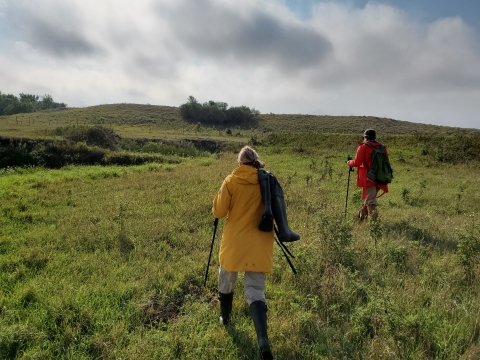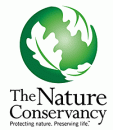Ways to Get Involved
Whether you want to further conservation, learn more about nature or share your love of the outdoors, you’ve come to the right place. National wildlife refuges provide many opportunities for you to help your community and fish and wildlife by doing what you love.
National wildlife refuges partner with volunteers, youth groups, landowners, neighbors, and residents of urban and coastal communities to make a lasting difference.
Find out how you can help make American lands healthier and communities stronger while doing something personally satisfying.
Volunteers: Gain new experiences and meet new people while helping to advance wildlife conservation.
Friends: Join neighbors in helping refuges restore habitat and expand access to green space.
Landowners: Learn how you can partner with the Fish and Wildlife Service to voluntarily restore land.
Local Groups: Find out how communities can work with refuges better for wildlife and people.
Youth: Explore paid and unpaid opportunities to learn and develop leadership skills.
More than 42,000 people volunteer their time and ideas each year to the U.S. Fish and Wildlife Service. Whether they work on the land, in a visitor center or with youth, they contribute to the conservation mission that reaches back more than a century. Become a volunteer to contribute your strength on behalf of America’s natural resources. The refuge may have seasonal projects that provide opportunities for volunteers to make a meaningful contribution to the refuge system.
Volunteering
Discover for yourself what tens of thousands of volunteers have learned - volunteering for the U.S. Fish and Wildlife Service is fun and rewarding in many ways. Master new skills. Meet new friends. Enjoy a sense of accomplishment from doing your part to further wildlife conservation for the pleasure of generations to follow.
Volunteers at Long Lake National Wildlife Refuge assist with bird counts, invasive species invasive species
An invasive species is any plant or animal that has spread or been introduced into a new area where they are, or could, cause harm to the environment, economy, or human, animal, or plant health. Their unwelcome presence can destroy ecosystems and cost millions of dollars.
Learn more about invasive species control, and developing educational exhibits or events. If you are interested in volunteering, please contact the refuge or check out volunteer.gov.
Our Partners
Nature does not recognize human-made boundaries. In order to conserve our natural and cultural resources effectively, we must work with others to bridge these boundaries. Partnerships foster creative solutions to challenging situations and often the results are greater than the sum of the parts.
Partnerships with the Refuge System bring innovative approaches to solving land management issues in the most protective manner. Scientifically-informed and technologically-based stewardship of our public lands, water, wildlife and special places must be a collaborative effort between the Refuge System, private landowners and organizations, and other government agencies if conservation efforts are to succeed. Learn more about our local partners.
- Partners for Fish and Wildlife
- Ducks Unlimited North Dakota (http://www.ducks.org/north-dakota)
- North Dakota Natural Resources Trust (http://www.ndnrt.com)
- Delta Waterfowl Conservation
- Emmons County Weed Board
- Kidder County Weed Board
- Burleigh County Weed Board
- Department of North Dakota Trust Lands (http://www.land.nd.gov)







